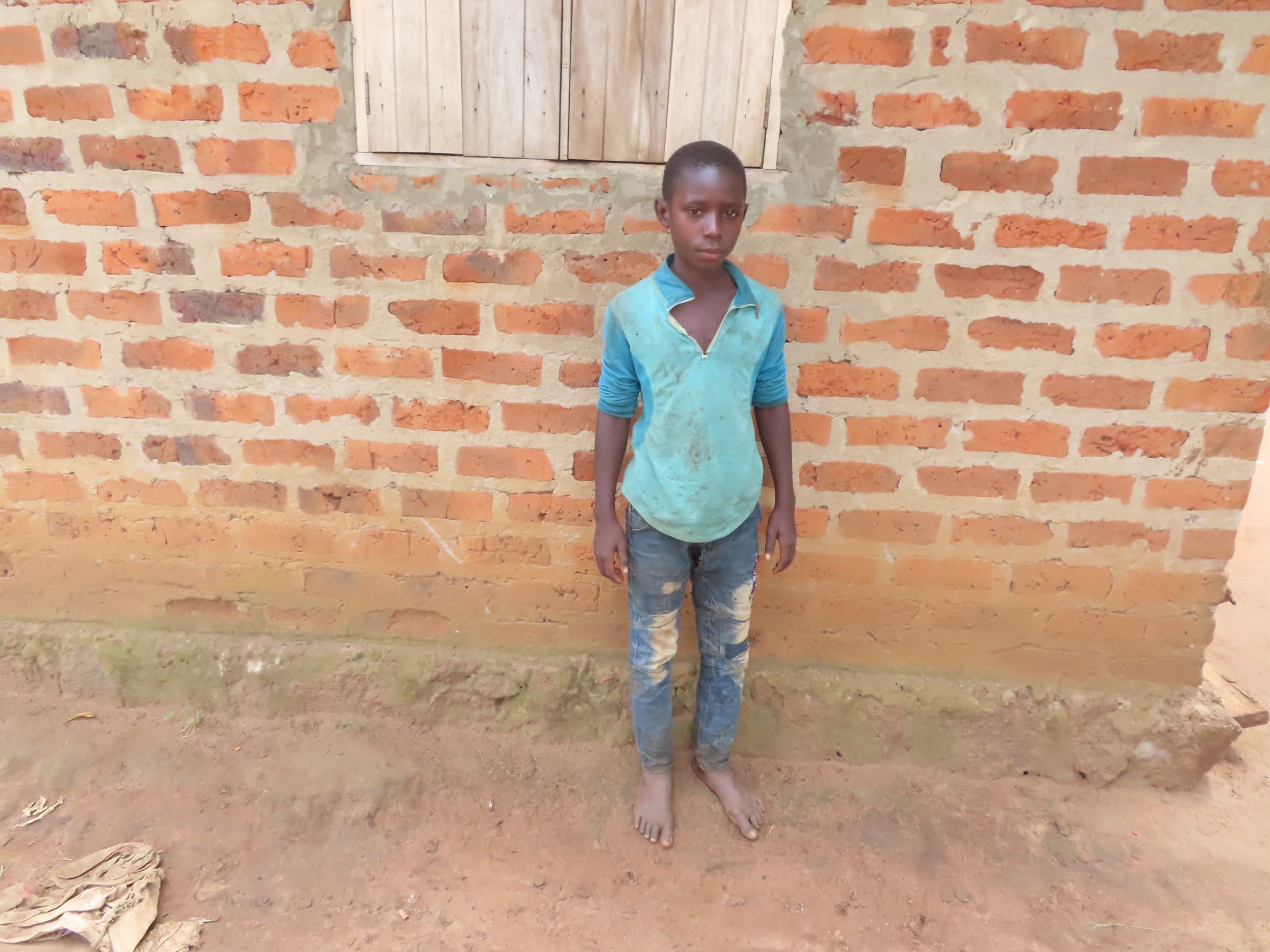The 500 people living in Miramura face a water crisis every day because their safe water sources are both too far from their homes and overcrowded.
There are two boreholes that community members rely upon, but for some, it takes nearly two hours just to reach them. Few are lucky enough to speed up that trip with a bicycle or motorcycle. And with people from other communities sharing the water points, nearly 1,000 people depend on the two borehole wells, making it impossible to meet the demand.
Overcrowding causes very long lines, and conflicts break out because people grow tired of waiting. "Sometimes people fight for water, and this causes enmity among children," said 13-year-old Robert M. (shown below). Another community member reported that sometimes people wait up to five hours to collect water, so the frustration is understandable.

18-year-old Immaculate Nyangoma (shown below), said, "I collect water from [the] Rwempunu borehole, which is about two kilometers away from our home, instead of fetching from the nearby borehole which is at the center because of the long queues and also low yield."

She continued, "It becomes hard for one to go there without a bicycle. It is also risky because we go through sugarcane plantations, and it's risky for girls, especially when we leave the water point late because of the long queues."

Immaculate shared that not only is it dangerous for young women to return late from the faraway water points alone, but girls in the community also struggle to deal with their monthly cycles without sufficient water while trying to maintain cleanliness and dignity.
But girls are not the only ones struggling.
Young Robert spends a lot of time at the water point. He told our field officer that the day before his interview, he went to the water point at 5:00 pm but didn't come back until 8:00 pm. His mother was worried about him taking so long, so she sent someone to collect him so he wouldn't travel through the sugarcane plantations so late by himself.

Robert also recalled a time he was using a bicycle to collect water but rushing home so he could do other things when he got into an accident that caused him to break all of the jerrycans needed for collecting water.
Immaculate and Robert, along with other community members of Miramura, need access to a closer water point that will allow them to reduce the amount of time and energy it takes for them to obtain water every day.
Note: Our proposed water point can only serve 300 people per day. We are working with the community to identify other water solutions that will ensure all 500 people in the community have access to safe and reliable drinking water.
Here’s what we’re going to do about it:
New Borehole
This new borehole is an exciting opportunity for this community! We work with the community to determine the best possible sites for this well.
We conducted a hydrogeological survey and the results indicated the water table is an ideal candidate for a borehole well. Due to a borehole well's unique ability to tap into a safe, year-round water column, it will be poised to serve all of the water needs for this community, even through the dry months.
Community members will help collect the needed construction materials such as sand, rocks, and water for mixing cement. They will also provide housing and meals for the work team, in addition to providing local laborers. We will complement their materials by providing an expert team of artisans and drilling professionals, tools, hardware, and the hand-pump. Once finished, water from the well will then be used by community members for drinking, handwashing, cooking, cleaning, and much more.
Training
Training’s main objectives are the use of latrines and observing proper hygiene practices since these goals are inherently connected to the provision of clean water. Open defecation, water storage in unclean containers and the absence of hand-washing are all possible contaminants of a household water supply. Each participating village must achieve Open Defecation Free status (defined by one latrine per household) prior to the pump installation for this borehole well.
This social program includes the assignment of one Community Development Officer (CDO) to each village. The CDO encourages each household to build an ideal homestead that includes: a latrine, a handwashing facility, a separate structure for animals, a rubbish pit and a drying rack for dishes.
We also implement the Community-Led Total Sanitation (CLTS) approach with each of our village partners. This aims to improve the sanitation and hygiene practices and behaviors of a village. During these sessions, village leaders naturally emerge and push the community to realize that the current practices of individual households – particularly the practice of open defecation – are not only unhealthy, but affect the entire village. CLTS facilitates a process in which community members realize the negative consequences of their current water, sanitation and hygiene behaviors and are inspired to take action. Group interactions are frequent motivators for individual households to build latrines, use them, and demand that other households do the same.
Improved Sanitation
The aim is that all households own an improved latrine. Many households do not use a latrine but use the bush. Due to open defecation, feces are spread all over the village. This leads to waterborne diseases and contamination of groundwater and surface water. Our aim is that the community is able to live a healthy life free of preventable diseases. We endeavor that at the end of our presence in the community, people will have both access to sustainable, clean water and access to sanitation. We have now organized families to form digging groups for latrine construction, and empowered them with tools to use.

 Borehole Well and Hand Pump
Borehole Well and Hand Pump
 Rehabilitation Project
Rehabilitation Project

























